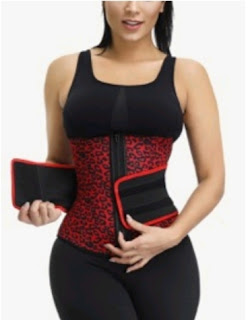The practice of cinching the waist using waist trainers or corsets is called waist training, and it helps achieve an hourglass figure. It has a varied and rich history that goes back centuries. It has its origins in ancient civilizations, and in modern times it has resurged as a very popular trend.
It has evolved alongside fashion ideals and many cultural norms. We want to go much deeper into the fascinating history of waist trainer drop shipping tracing the roots back to ancient practices to continue with the modern-day practices and manifestations.
Waist training ancient beginnings
The waist training practice can be traced back to ancient civilization. Back then some garments were used to shape and define the waistline. For example, in ancient Egypt, women used to wear linen bands or girdles around their midsections to accentuate their curves and also create their desired silhouette.
These early garments were often adorned with decorations and embroidery, which reflected the importance that Egyptian society placed on femininity and beauty. Ancient Roman and Greek women used garments known as "strophium", which was a breast band that extended down to the waist. It supported and shaped the torso.
Believe it or not, these early forms of waist training served as status symbols and societal standing while also being quite functional. They were elaborated with materials and designs that were only reserved for the elites. Surely, they would have had something similar to waistdear reviews to know where to get the best ones.
Corsetry during medieval times
During this period, the waist training concept evolved with the introduction of the corsets. These were structured garments that were made of stiffened fabrics or even whalebones. During this time, corsets were worn by women of all societal classes so they could achieve a fashionable silhouette. This was characterized by full hips and a narrow waist.
Initially, these corsets were laced at the back or the front and were also worn over a chemise to provide support and shaping to the torso area. The designs or corsets kept evolving, and in the Renaissance, these garments became more elaborate and featured intricate boning and even embellishments like embroidery, lace, or decorative stitching. They were also often tailored to conform to some idealized proportions, that had an emphasis on an ample bust and small waist.
The rise of tightlacing and the Victorian era
During this era, the waist training culture had a peak with the practice of tightlacing, which was the art of cinching the waist to extreme proportions using corsets that were tightly laced. The hourglass figure during this time was idealized as the epitome of beauty and femininity.
It became such a social phenomenon, that made women of all social classes and backgrounds strive to achieve these idealized tiny waists. The corsets were progressively laced tighter over time, and the help of maids of family members was needed to reduce the waistline.
Tightlacing was not only recognized for its ability to create a more fashionable silhouette, but it did carry some risks for health complications, which included organ displacement, skeletal deformities, and restricted breathing.
Contemporary Trends and Modern Resurgence
In recent decades, waist training has experienced a resurgence of popularity, thanks to celebrity endorsements, social media influencers, and even the athleisure culture, which includes wholesale yoga legging. Modern garments involve the use of waist trainers made out of neoprene, latex, or other compression materials.
They have been designed to provide targeted compression, especially to the midsection area as well as to stimulate thermal activity and promote perspiration which aids in shaping and slimming the waistline.
Contrary to the restrictive garments of the past, modern waist trainers are worn often during workouts and even as part of everyday outfits. They offer a more flexible and comfortable alternative to corsets. It has also become a more inclusive practice, as it's now offering a wide range of styles and sizes, that will accommodate diverse preferences and body types.




